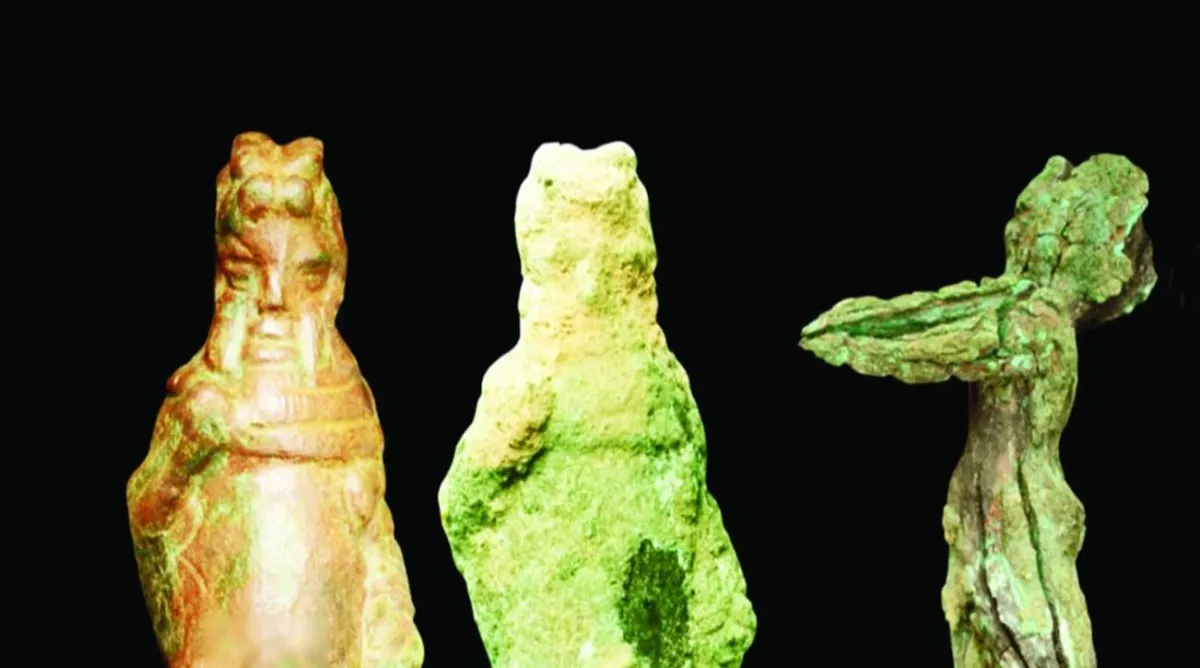Introduction to Wadi Al-Hajar
Wadi Al-Hajar is located in Al-Ula Governorate, northwest of the Kingdom of Saudi Arabia, and is administratively linked to the Medina region. Today it is a historical tourist monument of Saudi Arabia, forming an open archaeological museum in the middle of the sand in Wadi Al-Qura. It was added to the United Nations Educational, Scientific and Cultural Heritage List (UNESCO) in 2008 and its most famous feature is its 116 rock-cut tombs.
Archaeological Finds
Large groups of archaeological finds have emerged from this valley, uncovered through ongoing excavation, development and restoration campaigns, including a group of small bronze statues found at various locations in recent years. This collection is characterized by its purely Roman classical character and contains pieces that seem unusual in this corner of the desert. The most prominent of these is a statue depicting “Priapus,” the master of fertility and protector of gardens, fields and vineyards.
History of Wadi Al-Hijr
Wadi Al-Hijr was until recently known as Mada’in Saleh and many local tales were woven around it, stemming from religious heritage. However, archaeological research has conclusively proven that it was in fact one of the most important metropolises of the Nabataean Kingdom, founded in the north of the Arabian Peninsula and whose capital was Petra in the northeast of the Gulf of Aqaba, east of Jordan. This kingdom extended under the Roman Empire north from Damascus to Wadi al-Hajar, but at the beginning of the second century AD it lost its independence, was subject to this empire and was transformed into one of its states, known as the "Roman-Arab State".
Characteristics of Wadi Al-Hijr
Wadi Al-Hijr apparently retained its character during this period and did not take on an overwhelmingly Roman character. This mark appeared to a limited extent in a variety of archaeological evidence, including some small bronze statues that lost their features through oxidation. This group includes a female figure, most likely representing one of the female models enshrined in the dictionary of classical Greek art, the model known in Greek as "Nice", the deity that the Romans called Victoria, meaning goddess of victory, and another figure raising her arms horizontally in a graceful movement, most likely representing what is known as "Potou".
Restoration of the Statues
On the other hand, careful organizational measures succeeded in restoring a number of these statues to their original form, and these pieces formed a coherent group distinguished by their purely classical character. This group contains three animal statues that provide a realistic, sensual example, depicting an eagle, a goat and a camel. It also contains two human statues, one depicting a hairless young man whose nudity exudes Greek beauty, and the other depicting a bearded man with a dull face who appears fat and ugly. The young man holds a piece of leather with his left hand that hangs over his right shoulder, indicating that he belongs to the family of “satyrs,” i.e. the wood elves. The bearded man embodies a common role model in the Roman world known as “Priapus”.
The Statue of Priapus
The three animal statues were featured in an exhibition at the Arab World Institute in Paris in the fall of 2019 under the title “Al-Ula, the Oasis of Wonders,” and the “Satyr” statue was displayed alongside them, contributing to the widespread circulation of their images in the media. On the other hand, the statue of “Priapus” remained in the shadows and became known only through scientific reports that monitored the discovery of these statues and published their double image before their restoration and after the complete restoration of their features after this restoration. This statue was found next to the statue of “Bhutto”. It is approximately 8 centimeters tall and depicts a female figure who has apparently lost the lower part of her legs. It is shown here in an opposite position.
Description of Priapus
Priapus appears with a huge head connected directly to the chest, as if he had no neck. The eyes are large, the nose is prominent and snub-nosed, and the mouth is wide, with a horizontal slit in the middle that clearly separates the lips. This face is crowned by thick hair crowned by four broad, homogeneous strands, and his cheeks are framed by two broad stripes representing a beard resting on the shoulders. The man raises his right arm to his chest and wears a short coat with a wide lining of two horizontal stripes. This cloak hangs down to the waist and reveals the man’s private parts, in keeping with the particular example for which Priapus became famous.
The Origins of Priapus
In the oldest Greek sources we find no mention of this character. He is one of the minor deities, and there are numerous stories that mention his origins. The most famous of these say that he is the son of Aphrodite, mistress of beauty and temptation, by Zeus, master of the deities. This birth angered Hera, the legal wife, and she bloodied the child out of jealousy until Aphrodite abandoned him and sent him away. A shepherd took him in and raised him. He became the master of fertility and the protector of pastures, fields and springs. Statues of him were erected in these many pastures to represent his strength as the protector of fever.
The Significance of the Bronze Statues
The bronze statues of Wadi Al-Hijr form a small group that testifies to a modest presence of Greek artistic heritage in this part of the Hijaz. They include a similar group that comes from the village of Al-Faw, which lies southwest of Riyadh and crosses Wadi Al-Dawasir. In this area, the “Priapus” statue appears unique and testifies to the fleeting presence of this small deity on the Arabian Peninsula.

